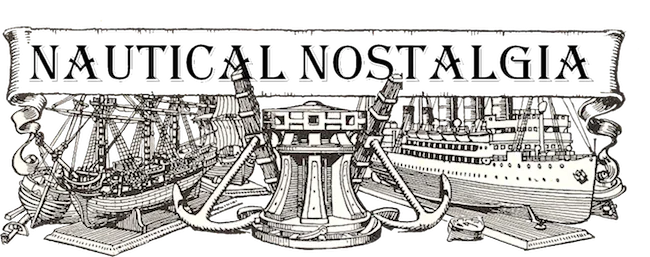Interests
David has a wide range of (admittedly, mostly sea-based) interests, about which you can read more by clicking on the relevant tab below.
In 1955 David became aware of the Commonwealth Trans-Antarctic Expedition, from the media coverage. This sparked an interest in Antarctic exploration, and at the age of six, David felt that one day he would visit Antarctica.
In 1972, with his career at sea well established, and holding a First Mates’ certificate, he answered an advert for a Second Mate in the British Antarctic Survey.
Interviewed by Captain Tom Woodfield, David was appointed to the small research vessel RRS “John Biscoe”.
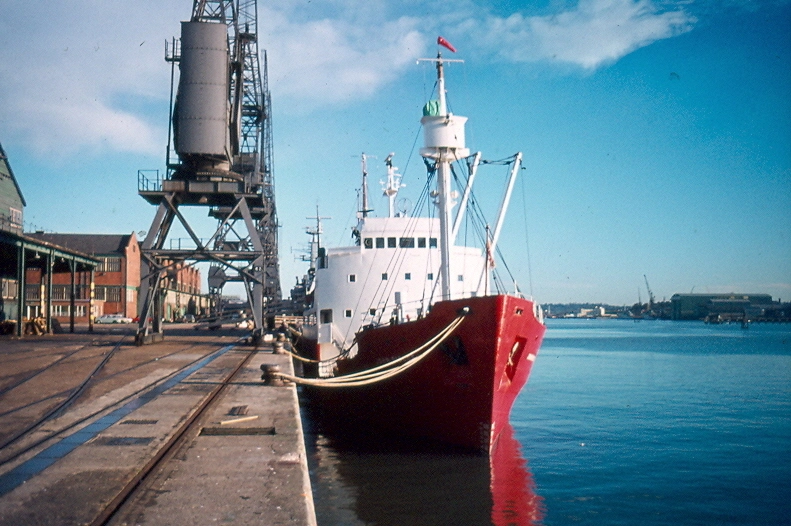
The British Antarctic Survey vessel
RRS “John Biscoe” at Southampton
David served three years in this vessel, making three seven-month voyages to Antarctica. The ship carried out relief and re-supply for the BAS bases on the Antarctic peninsula, the South Orkney Is. and South Georgia.
She also supported a variety of scientific projects. David was responsible for the navigation of the vessel, and also spent a lot of the time in small boats, landing scientists on multifarious beaches, and carrying supplies and stores to the bases from the ship at anchor.
With many adventures, this was the most interesting phase of David’s career, and he was sad to leave “Biscoe” to study for his Masters’ certificate in 1975.
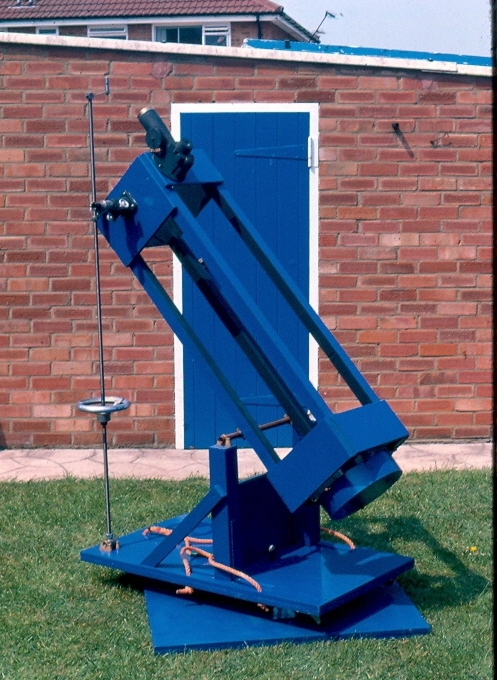
This is the 10” Newtonian reflecting telescope I built in 1980. Not very elegant but it worked a treat!
Astronomy is something of a “lapsed interest”, as David hasn’t been involved in it for about 25 years.
Back in 1980 he built a 10” reflecting telescope using mirror optics bought for a song. For some years David enjoyed observing the sky using this instrument.
He also ran an Astronomy ‘O’ level evening course at Lowestoft College.
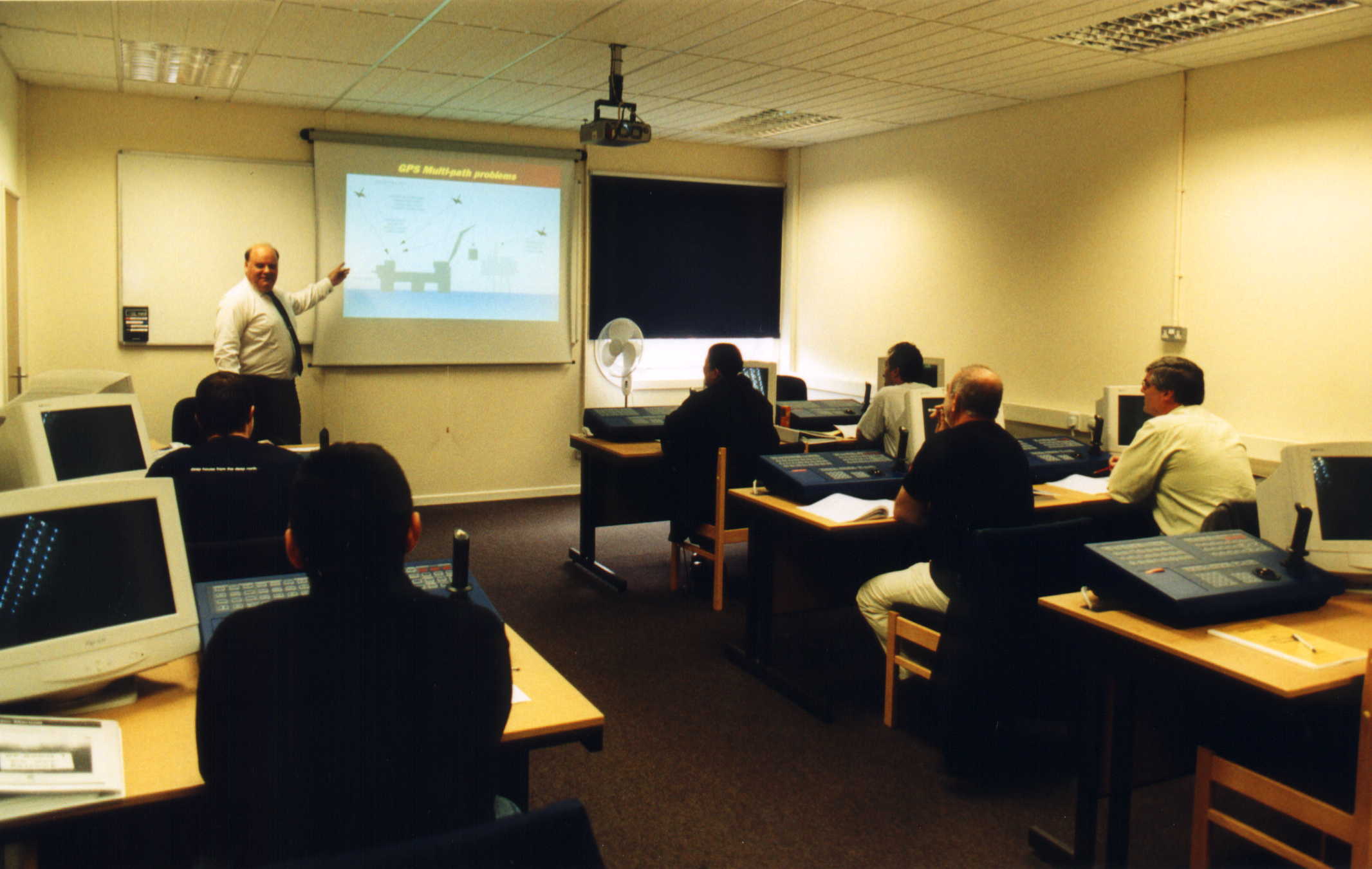
This is me lecturing to a class of ships’ officers in the Dynamic Positioning unit at Lowestoft College
In 1983, Lowestoft College responded to an industry request to provide training to ships’ officers engaged in these vessels. David was put in charge of the project. The College installed an extensive simulator unit, the first of it’s type in the world.
In order to be able to design and carry out training, David undertook a number of voyages in a variety of DP ships in the North Sea, and went to Norway for training with the equipment manufacturer.
In 1984 the first courses were run, and David rapidly established a world-wide reputation for quality training in this area.
In 1989, David won a National Training Award for Lowestoft College in recognition of this work, and the next year he was made Fellow of the Nautical Institute. David is the author of a number of textbooks on the subject, and laid down the training standards to be adopted by all such training centres world-wide. He has also delivered a number of technical papers at international conferences.
When he retired in 2008, David had trained over 4,000 ships’ Captains and Officers from all over the world, and had run almost 1,000 training courses.
The Nautical Institute has now published the Third Edition of the DP Operator’s Handbook by David. This fully revised textbook is the worldwide-accepted standard text for the training of DP Operators and others in DP-capable vessels.

David’s fascination with all things to do with ships and the sea began at an early age (about 5). Growing up in the port of Great Yarmouth he rapidly became very familiar with the variety of craft and vessels frequenting that small port. At that time there was a thriving seasonal herring fishing industry with dozens of drifters working from the port during November and December.
Annual holidays in London with his parents introduced David to the world of deep-sea shipping. Day trips on the Thames were full of variety and interest, with ships and craft in great profusion. The trip from Tower Pier to Southend in the “Royal Sovereign” gave David a taste for greater things. It is probably true that his career and interests were formed during these river voyages.
Another downriver voyage in those days was to Greenwich. Here, David discovered another world – that of the deep-sea sailing ship. To an impressionable 8-year old, the “Cutty Sark” was fantastic, and resulted in a lifelong interest in historic sailing ships. This was confirmed by a visit to the National Maritime Museum.

David’s painting of the Cuttty Sark
David has been actively involved in the preservation of one historic craft, the Norfolk Wherry “Albion”, owned and run by the Norfolk Wherry Trust. [More on Norfolk Wherries and the “Albion”]
After a lifetime of involvement in the shipping industries, especially the Merchant Navy, David considers that it is a tragedy that not one example of a British ocean-going merchant ship has been preserved for posterity, (except the RMS “Queen Mary” – in California!), and that otherwise there is no reminder of this once huge industry.
In 2005 David saw advertised a “Maritime Memories” cruise in the cruise liner “Discovery”, aimed specifically at people interested in ships, or ex-seafarers. The voyage was organised by Des Cox in conjunction with the ship’s operators (Voyages of Discovery). Mary and David went along as fare-paying passengers (a bit of a wrench for David after a career in shipping) and, to cut a long story short, had a very enjoyable time.

City of Exeter. One of the last of the Ellerman passenger liners. I was Cadet for two voyages on this one.
Asked to give a lecture about Antarctica in the ship’s theatre, this introduced David to the business of cruise-ship lecturing. Mary and David have sailed on every Maritime Memories voyage ever since and have gained many great friends as a result. Typically there will be about 150 ex-seafarers on board, and they liven the ship considerably.
Des Cox, with his wife Ulla, run a company called Snowbow, which, in addition to organising the “Maritime Memories” voyages, collects and restores archive film of ships and marine subjects. He produces one-hour videos featuring different shipping companies or ports, marketed to the shipping fraternity. The catalogue now numbers about thirty films.
David is currently making a precise database of all these films such that individual ships can be identified.

“Albion” – One of the last surviving
trading wherries on the Broads
As mentioned previously, David was introduced to the business of sailing a Norfolk Wherry during holidays on the Broads in the early 1960s. Joining the Norfolk Wherry Trust, David became an active member of this preservation society.
Taught the intricacies of wherry sailing by “Albion”’s professional wherryman-skipper, David quickly became proficient at this almost-forgotten skill.
During the summer, David sailed as Skipper of “Albion” while, during the winter, he organised her refit and maintenance (a generally thankless task).
He was also editor of the Trust’s bi-annual magazine – “The Quant”. David’s wife, Mary, usually accompanied him in these activities, and in addition served as the Trust’s Social Secretary.
David is a life member of the Norfolk Wherry Trust.
As might be expected, David has spent a large part of his life messing around in small boats. Aged 12 to 16 he spent several Easter holidays sailing with a group of schoolkids on the Norfolk Broads. These chilly weeks introduced him to small-boat sailing and to the wherry “Albion”. Joining the school’s sailing club, he was able to regularly sail a battered Enterprise dinghy on Breydon water.
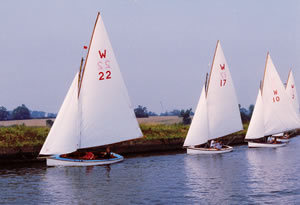
Waveney 22 “Myrica”
leading the pack at Beccles regatta
In 1970 he had a Yachting World Dayboat built by Lewis Walker of Leigh-on-Sea. Fourteen feet long, of varnished mahogany with “barge tan” sails she was the apple of his eye. This boat gave David an enormous amount of fun sailing on the Broads and from Southwold. She was sold in 1983.
In 1984 David bought a Waveney One-Design, a 20ft half decked racing yacht of a type raced on Oulton Broad. With Mary as crew, David raced this boat (“Myrica”, W22) every weekend and Wednesday evening through the summer season. Although built in wood to a very traditional design, the Waveney is a challenging boat to sail, especially in a strong breeze. In about 1989 David bought the derelict sister boat “Autumn Crocus” (W23), spending the next two years rebuilding her with the assistance of retired shipwright, the late Harry Oldman. On completion, “Myrica” was sold and David raced “Autumn Crocus” with considerable success. This boat was sold in 2000.
As a result of the contacts made, David was able to join the Norwegian fullrigger “Sørlandet” for a voyage from Lowestoft to Norway in 1989. This was a magic experience for David; sailing a square rigger at night in a strong breeze is one of his fondest memories.

This is me at the helm of the Norwegian square-rigged training ship “Sørlandet” on a voyage from Lowestoft to Kristiansand
Antarctica
In 1955 David became aware of the Commonwealth Trans-Antarctic Expedition, from the media coverage. This sparked an interest in Antarctic exploration, and at the age of six, David felt that one day he would visit Antarctica.
In 1972, with his career at sea well established, and holding a First Mates’ certificate, he answered an advert for a Second Mate in the British Antarctic Survey.
Interviewed by Captain Tom Woodfield, David was appointed to the small research vessel RRS “John Biscoe”.

The British Antarctic Survey vessel
RRS “John Biscoe” at Southampton
David served three years in this vessel, making three seven-month voyages to Antarctica. The ship carried out relief and re-supply for the BAS bases on the Antarctic peninsula, the South Orkney Is. and South Georgia.
She also supported a variety of scientific projects. David was responsible for the navigation of the vessel, and also spent a lot of the time in small boats, landing scientists on multifarious beaches, and carrying supplies and stores to the bases from the ship at anchor.
With many adventures, this was the most interesting phase of David’s career, and he was sad to leave “Biscoe” to study for his Masters’ certificate in 1975.
Astronomy
In 1955 David became aware of the Commonwealth Trans-Antarctic Expedition, from the media coverage. This sparked an interest in Antarctic exploration, and at the age of six, David felt that one day he would visit Antarctica.
In 1972, with his career at sea well established, and holding a First Mates’ certificate, he answered an advert for a Second Mate in the British Antarctic Survey.
Interviewed by Captain Tom Woodfield, David was appointed to the small research vessel RRS “John Biscoe”.

This is the 10” Newtonian reflecting telescope I built in 1980.
Not very elegant but it worked a treat!
Dynamic Positioning

This is the 10” Newtonian reflecting telescope I built in 1980.
Not very elegant but it worked a treat!
In 1983, Lowestoft College responded to an industry request to provide training to ships’ officers engaged in these vessels. David was put in charge of the project. The College installed an extensive simulator unit, the first of it’s type in the world.
In order to be able to design and carry out training, David undertook a number of voyages in a variety of DP ships in the North Sea, and went to Norway for training with the equipment manufacturer.
In 1984 the first courses were run, and David rapidly established a world-wide reputation for quality training in this area.
In 1989, David won a National Training Award for Lowestoft College in recognition of this work, and the next year he was made Fellow of the Nautical Institute. David is the author of a number of textbooks on the subject, and laid down the training standards to be adopted by all such training centres world-wide. He has also delivered a number of technical papers at international conferences.
When he retired in 2008, David had trained over 4,000 ships’ Captains and Officers from all over the world, and had run almost 1,000 training courses.
The Nautical Institute has now published the Third Edition of the DP Operator’s Handbook by David. This fully revised textbook is the worldwide-accepted standard text for the training of DP Operators and others in DP-capable vessels.
Maritime History
David’s fascination with all things to do with ships and the sea began at an early age (about 5). Growing up in the port of Great Yarmouth he rapidly became very familiar with the variety of craft and vessels frequenting that small port. At that time there was a thriving seasonal herring fishing industry with dozens of drifters working from the port during November and December.
Annual holidays in London with his parents introduced David to the world of deep-sea shipping. Day trips on the Thames were full of variety and interest, with ships and craft in great profusion. The trip from Tower Pier to Southend in the “Royal Sovereign” gave David a taste for greater things. It is probably true that his career and interests were formed during these river voyages.
Another downriver voyage in those days was to Greenwich. Here, David discovered another world – that of the deep-sea sailing ship. To an impressionable 8-year old, the “Cutty Sark” was fantastic, and resulted in a lifelong interest in historic sailing ships. This was confirmed by a visit to the National Maritime Museum.

David’s painting of the Cuttty Sark
David has been actively involved in the preservation of one historic craft, the Norfolk Wherry “Albion”, owned and run by the Norfolk Wherry Trust. [More on Norfolk Wherries and the “Albion”]
After a lifetime of involvement in the shipping industries, especially the Merchant Navy, David considers that it is a tragedy that not one example of a British ocean-going merchant ship has been preserved for posterity, (except the RMS “Queen Mary” – in California!), and that otherwise there is no reminder of this once huge industry.
Maritime Memories

City of Exeter. One of the last of the Ellerman passenger liners.
I was Cadet for two voyages on this one.
In 2005 David saw advertised a “Maritime Memories” cruise in the cruise liner “Discovery”, aimed specifically at people interested in ships, or ex-seafarers.
The voyage was organised by Des Cox in conjunction with the ship’s operators (Voyages of Discovery).
Mary and David went along as fare-paying passengers (a bit of a wrench for David after a career in shipping) and, to cut a long story short, had a very enjoyable time.
Norfolk Wherries

“Albion” – One of the last surviving trading wherries on the Broads
As mentioned previously, David was introduced to the business of sailing a Norfolk Wherry during holidays on the Broads in the early 1960s. Joining the Norfolk Wherry Trust, David became an active member of this preservation society.
Taught the intricacies of wherry sailing by “Albion”’s professional wherryman-skipper, David quickly became proficient at this almost-forgotten skill.
During the summer, David sailed as Skipper of “Albion” while, during the winter, he organised her refit and maintenance (a generally thankless task).
He was also editor of the Trust’s bi-annual magazine – “The Quant”. David’s wife, Mary, usually accompanied him in these activities, and in addition served as the Trust’s Social Secretary.
David is a life member of the Norfolk Wherry Trust.
Sailing
As might be expected, David has spent a large part of his life messing around in small boats.
Aged 12 to 16 he spent several Easter holidays sailing with a group of schoolkids on the Norfolk Broads.
These chilly weeks introduced him to small-boat sailing and to the wherry “Albion”.
Joining the school’s sailing club, he was able to regularly sail a battered Enterprise dinghy on Breydon water.

Waveney 22 “Myrica”
leading the pack at Beccles regatta
In 1970 he had a Yachting World Dayboat built by Lewis Walker of Leigh-on-Sea. Fourteen feet long, of varnished mahogany with “barge tan” sails she was the apple of his eye. This boat gave David an enormous amount of fun sailing on the Broads and from Southwold. She was sold in 1983.
In 1984 David bought a Waveney One-Design, a 20ft half decked racing yacht of a type raced on Oulton Broad. With Mary as crew, David raced this boat (“Myrica”, W22) every weekend and Wednesday evening through the summer season. Although built in wood to a very traditional design, the Waveney is a challenging boat to sail, especially in a strong breeze.
In about 1989 David bought the derelict sister boat “Autumn Crocus” (W23), spending the next two years rebuilding her with the assistance of retired shipwright, the late Harry Oldman. On completion, “Myrica” was sold and David raced “Autumn Crocus” with considerable success. This boat was sold in 2000.
A different type of sailing: David has long held an interest in square-rigged sailing ships, and in 1988 was appointed to the Nautical Institute Sailing Ship qualifications committee.
As a result of the contacts made, David was able to join the Norwegian fullrigger “Sørlandet” for a voyage from Lowestoft to Norway in 1989. This was a magic experience for David; sailing a square rigger at night in a strong breeze is one of his fondest memories.

This is me at the helm of the Norwegian square-
rigged training ship “Sørlandet” on a voyage from
Lowestoft to Kristiansand
